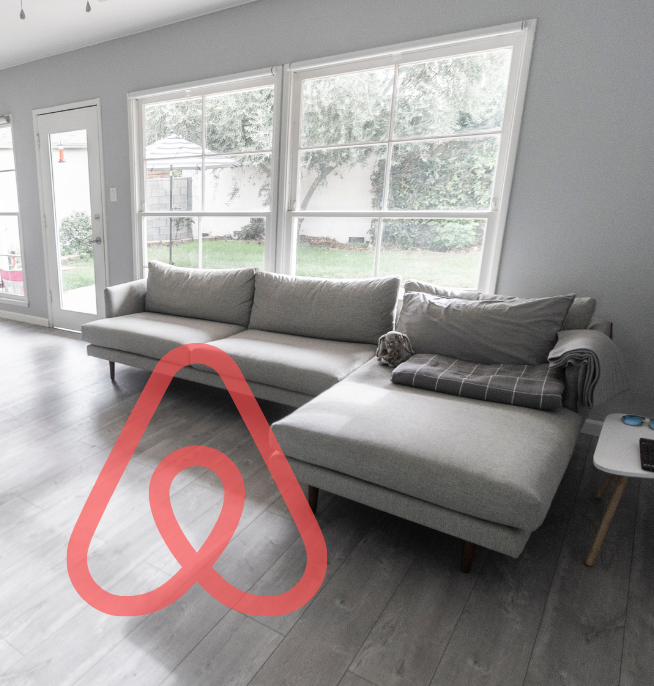You might know that before becoming a full-time business coach and consultant, I came from a marketing background and ran a small digital agency for twelve years.
There came a time during my years at the helm of the agency when I had become so caught up in boom and bust, I turned to all sorts of things to try to get me off that roller coaster. It was only after a serious episode that nearly took my eyesight from the stress that I had a wake-up call. I realised that if I didn’t make some changes and pull through that, I may as well close the dang agency. Whilst I’ve got some stories of triumph, big client wins (and a crazy trip to Amsterdam), I learned some valuable lessons. To this day, I’m still looking back and thinking about what I could have done better.
So, after going on my journey of fanatically educating myself about business and having time to reflect, I thought I’d share the biggest mistakes I made. My hope is that you take something away, whether it be a lightbulb moment or a word of caution. Maybe even the inspiration to get you to start changing before your agency or business changes you.
My Seven Agency Mistakes
#1 Not having systems and processes
In my early days, it’s maybe unfair to say naive, but I put a little too much stock in a handshake agreement. However, after realising that disagreements on invoice schedules, scope creep, and stress from a dislocation of expectations, I had to address uncertainty. It was time to put in place some systems and processes.
I remember the turning point of creating my ‘run book’. And to this day I still use a similar format with a Trello board that has everything on it from onboarding a client, to kick off and everything that comes after that. Whenever there is anything that needs to be done twice in your agency, create a process for it. That process could even be a simple checklist. When it comes time to grow and eventually scale your agency, you’ll thank yourself.
Here’s an example of a Client Onboarding Checklist.
Eliminating confusion for your client, uncertainty for your team and having templates will save so much time and streamline your daily operations. You can get on with your work and get on with adding massive value to your clients.
You can’t scale your business without systems, start early, start now as it won’t be an overnight thing.
#2 Not having a handle on job profits
Cash flow is one thing but margins are altogether a different animal. You can be a beast when it comes to sales and landing new projects but if you don’t have a handle on your margins, you can get as many new clients as you want but you’re going nowhere fast.
I was very fortunate to have some coaching with the incredible Keith Cunningham and it’s where I found my love of numbers. Before that, I was awful. I knew that my team were busy, I was busy but that level of activity simply wasn’t reflected on the invoice schedule (or in my bank balance for that matter). So here are a number of things to get to grips with.
Gross margin. In an agency business or service-based business, this is tricky. Usually, this is sales less your cost of goods sold. Technically you can put the wages of your producers and your sub-contractors in here but not all their time is spent on fee earning work so it’s tricky. And for full-time employees, you pay them regardless of how many sales you make.
What you can’t see will kill you. If you don’t know what your breakeven hourly rate is and you don’t know the gross margins on projects, odds are you are going to discover some monsters. One of those monsters is known as scope creep. You agree a cost with a client for a piece of work, the client ends up changing the brief or the project goes in a new direction but more often than not the client is not charged for the additional work.
You know what I’m talking about so let me ask you a question. Why are you bankrolling your clients’ projects?
It’s time to start getting to grips with your numbers. If you haven’t worked out your breakeven hourly rate, don’t worry I’ve got this nifty little calculator tool for you to do that. It’ll take a few minutes and give you a whole new perspective.
Grab the agency health check calculator here.
#3 Undervaluing (and selling retainers)
In agency land, I was under the illusion that retainers were a silver bullet. Retainers would solve my cash flow issues, would solve the constant and never-ending need to find new clients, new projects. And I was tripping over myself to get clients onto retainers as soon as they had a foot in the door.
You can read about why I don’t advocate for the retainer model in my Forbes article, ‘Stop Selling Retainers, Start Solving Root Problems’ so I won’t dwell on retainers too long. The real lesson was actually about charging more and avoiding the commodity trap. You see value-based pricing is where it’s at!
When I was on the boom and bust rollercoaster, there were times when I could see the bust coming and I would hustle like a woman possessed. I’d get my sales on and land more work than we could handle. BUT in my fear of the bust and in my haste, I didn’t charge enough (I also took all any work that came my way). The literal penny dropped when I realised that we were creating websites for clients that was providing them with a powerful tool to grow their business. Trading time for money sucked and I had to adjust our pricing accordingly. I tore up the agency rate card and started communicating with clients that our prices were going up.
The funny thing was, no one complained. Maybe it was the way I rolled it out or maybe it was because clients knew they had us for a steal! Either way, if you want the exact steps to break this habit and the scripts to raise your prices without losing clients, I’ve got you covered.
#4 Paying myself last
Oh, this one is a kicker. I’ll never forget the day I was sitting with my accountant and he congratulated me on our six-figure net profit. He then presented me with our tax bill and his invoice. All the while in the back of my head thinking “hold on a minute, I’ve basically paid myself minimum wage and I have to pay the tax man how much?!?”
If you’ve ever looked at the bottom line on your P&L and thought, “where’s the money?” I feel you.
This kind of links up with point #2. I summoned up some lessons I’d learned from my parents when I went off to university about budgeting and putting money in envelopes. I set about opening separate bank accounts and got into a good habit of transferring cash into the respective pots. I started off by setting up one for VAT and tax, one for profit and I eventually got more sophisticated with it.
In fact, I got so good at it that we always had about six months operating cash in the bank at any given time so we could weather any storm. I was paying myself regularly and a fair wage for the risk and work. And not only that, we had built up a savings pot for things like buying a studio and Christmas parties in Amsterdam.
If I can encourage you to do one thing, it’s to set up at least a different “pot” for your VAT, tax and profit. Twice a month when you do your invoicing or banking, transfer the VAT amount and transfer a little for profit, even if you start with 1%. Out of sight, out of mind. You’ll save yourself a lot of stress and eventually you’ll have a pot to pay yourself profit disbursements from! You’re not just a money collector for the taxman and you deserve to be paid regularly.
#5 Servicing the squeakiest wheels
Every new project, especially web projects would start with fresh enthusiasm and hope that this will be the one. The project where everything goes to plan, on time, on budget. It was a level of optimism that the much older and wiser version of myself has a chuckle at now.
In reality, we had a production board that we huddled around every Monday morning and we’d prioritise things based on who was shouting loudest. If you’re a small agency with limited resources and juggling multiple projects where you get inevitable bottlenecks, this kind of project management technique is called “oil the squeakiest wheels first”.
I tried pretty much everything thing in the book. We even tried to switch to agile project management which definitely has its merits and place for some projects. What it came down to were three simple steps.
Educating clients on our processes. We would share a client success map and bring them along on the journey with us so they knew every step of the way and what success looked like.
Implementing a visual representation of our resources and project milestones and learning to say no to clients (whoa, if we couldn’t say no we’d charge more for ‘Amazon Prime’ type requests).
Friday downloads. Sounds weird and I’m sure I could have been more creative but we created a habit that every Friday every client received a download. It would be short and sweet including what we’d done that week, what wasn’t done and why, the priority for next week. It would be delivered via email, a Loom video, a voice memo or phone call no matter what. It was sent even if there was nothing new to update.
When we had milestones, a picture of where we had gaps in resources or where things were bunching up, we communicated with clients. Since implementing that, we never got chased and when clients have to chase that’s when tensions start to rise. Slowly but surely things calmed down and we could prioritise better. It takes developing a new habit and it’s like training a muscle in the gym, consistency was key.
The funny thing is that on the very rare occasion where I was late for a Friday download, I’d have calls or emails from clients asking if I was ok. Isn’t that better than being chased by a stressed client?
#6 Not niching down
Very early on in my agency days, I resisted niching down. It felt completely counter-intuitive and I didn’t want to pigeonhole the business. That irrational thinking might have come with starting a business in a recession and not wanting to leave anyone out of the sales funnel but it was wrong.
If you’re selling to everyone you’re selling to no one. As soon as I realised that you didn’t have to stick to one niche forever, that if you start going in the wrong direction you can pivot and you also won’t be leaving people out of the sales funnel, things started to click.
If you haven’t found your niche yet, it’s time. Saying that “I’m a branding agency” or “we’re a web agency” is not going to help with attracting the perfectly aligned clients you want to work with and the ones who are going to grow with your agency. If you take any work that comes your way and stay a generalist you’ll get caught up in that commodity trap I mentioned in #3 and you’ll stay a generalist trading time for money. That's painful.
I promise it won’t be easy, if you put in the work to find your niche and get clarity around the messaging you can charge more as a specialist and exponentially grow your business. Once I had found our 'accidental' niche, I never worried about where our next client was coming from again.
I have a ton of resources to help you do this and I promise it’ll be worth it. And if you think a niche will narrow your audience, just this week I met a very successful interior design practise that specialises in office design for optometrists. Can you imagine how much easier their marketing is if they’re only speaking to one type of client!
#7 Not understanding where real growth comes from
The greatest leap in quantum growth for my agency business was after I went to a Tony Robbins event and learned that there are only 3 ways to grow any business. You can increase the number of clients you have, you can increase the average transaction value and you can increase the frequency of purchase.
I had this twilight moment when I realised that I was only focused on getting new clients. But if I could grow clients x grow the average spend x grow the number of times they purchased things, growth would get a whole lot easier.
I set about creating a 10/10/10 growth plan to grow each by 10% and quickly realised that didn’t equate to 30% but a whole lot more. Oh boy, this started to get fun!
I set about creating a ‘Poker Game’ to encourage the whole team to participate in the growth plan. Four of a kind meant upselling a web copywriting package, two pairs equated to something else, maybe getting a testimonial or referral and so on. Before you know it, the whole team were coming up with innovative ways to add more value to clients, offering cross-sells and up-sells.
By the way, I have a whole blog post on the 3 ways to grow any business and it includes a link to download a Geometric Growth Plan worksheet for you to have a play with the numbers.
There you have it - the seven mistakes I made in my agency business. Mistakes can make you or break you!
The only real mistake is the one from which we learn nothing
I’m sure there are plenty more mistakes that I could talk about. And some of these mistakes I’ve covered are rudimentary. Basic. But when you’re stuck in the weeds, the day to day, they’re not that obvious. One by one they were all valuable lessons that led to me building a six-figure profit agency but more importantly creating a sustainable business that I enjoyed.
Did you find anything here helpful? If you’re struggling with any part of the transition to get off the rollercoaster, let’s have a chat. DM me on social or email me hello@workwithsian.co.uk to start the conversation. If you’re ready, book a no-obligation strategy call with me and let’s break down your biggest challenge.



